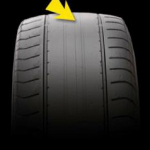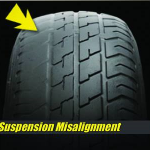Air Pressure
 This is specified by the vehicle manufacturer and is measured in PSI or BAR pressure. Pressure has to be checked periodically to ensure that it meets the specified limits, especially in periods where there are adverse changes in weather temperatures. Correct tyre pressures lead to proper handling of the vehicle, fuel economy and longer tyre life. Tyre valves should be changed whenever a tyre is replaced and a valve cap put in position to ensure that no dust particles go into the valve.
This is specified by the vehicle manufacturer and is measured in PSI or BAR pressure. Pressure has to be checked periodically to ensure that it meets the specified limits, especially in periods where there are adverse changes in weather temperatures. Correct tyre pressures lead to proper handling of the vehicle, fuel economy and longer tyre life. Tyre valves should be changed whenever a tyre is replaced and a valve cap put in position to ensure that no dust particles go into the valve.
Alignment
 Poor alignment can result in the vehicle pulling to one side, and this invariably results in rapid, uneven wear of tyres and the vehicle becomes less safe to operate. Proper alignment will result in:
Poor alignment can result in the vehicle pulling to one side, and this invariably results in rapid, uneven wear of tyres and the vehicle becomes less safe to operate. Proper alignment will result in:
• 30% increase in tyre mileage on an average
• 2% increase in fuel economy
An unbalanced tyre results in steering vibrations, thereby leading to premature wearing of the vehicle
suspension system as well as the tyres.
Balancing of tyres results in a smoother and more comfortable drive.
Tread Wear

Tyres must have at least 1.6 mm of tread on them in order to ensure safe and proper handling of the tyre especially in wet conditions. Tread Wear Indicators are put on tyres to show the critical tread depth and no tyre should be used beyond these indicator levels. If one is unsure of the tread depth, our Service Bay team will gladly measure it and advise.



